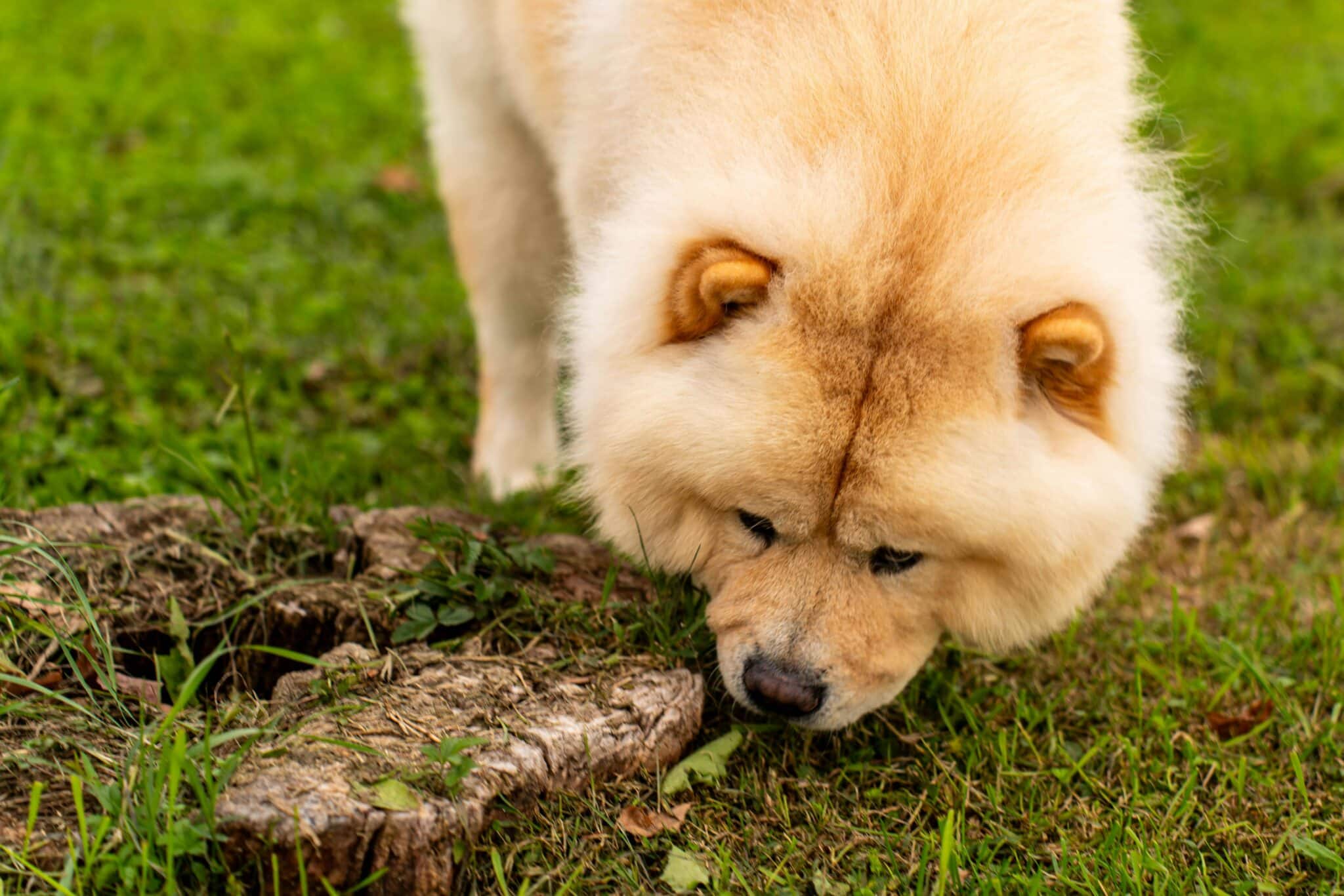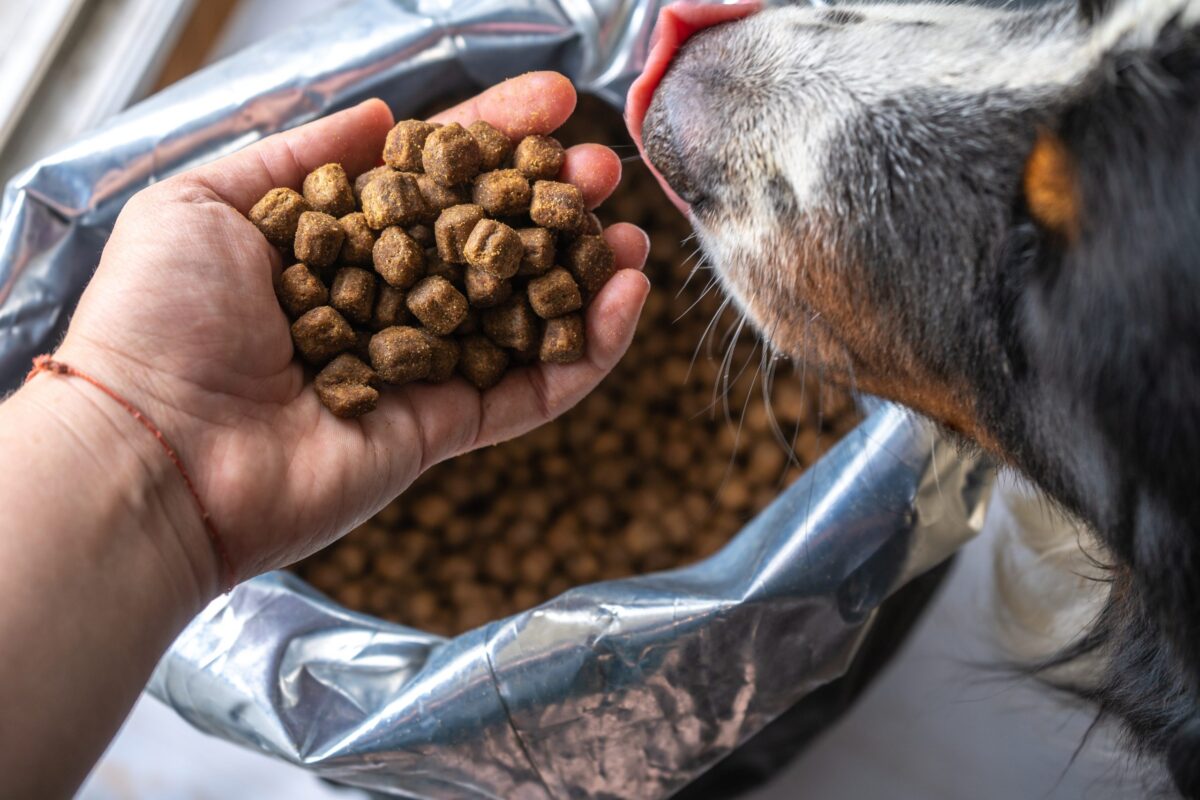 Shutterstock
Shutterstock
Dogs have an extraordinary sense of smell, far more powerful than humans, allowing them to detect scents that are invisible to us. With up to 300 million olfactory receptors (compared to our 5 million), dogs can identify odors at incredibly low concentrations. This keen sense helps them explore their surroundings, communicate with other animals through pheromones, and even detect human emotions. Their powerful noses play a crucial role in survival, social behavior, and forming deep bonds with both animals and humans, shaping how they interact with the world.
Dogs Have an Exceptional Sense of Smell
 Shutterstock
Shutterstock
One of the primary reasons dogs are drawn to certain smells is simply the fact that their sense of smell is exceptional. While humans rely heavily on sight and sound, dogs rely almost entirely on their noses to understand their surroundings. Scientific research has shown that dogs have approximately 300 million olfactory receptors in their noses—compared to only 5 million in humans. This difference explains why dogs can detect smells at concentrations nearly 100,000 times lower than what humans can perceive. In addition to these receptors, dogs also possess a larger area of the brain dedicated to processing smells than humans do, meaning they can gather, process, and react to scents much more efficiently. Their highly developed olfactory system enables dogs to interpret their environment in a way we simply cannot.
 Shutterstock
Shutterstock
Dogs are social animals, and much of their social interaction is based on smell. In the wild and in domestic settings, dogs use scent as a primary means of communication. Pheromones, which are chemical signals released by animals, play an important role in how dogs communicate with one another. Dogs use scent to identify other dogs, understand their emotional state, and even recognize familiar individuals. For example, when two dogs meet, they will often sniff each other’s rear end, a behavior that helps them gather critical information about the other dog, such as their age, sex, health, and emotional state. In a study on dog behavior, researchers found that dogs are extremely sensitive to the pheromones emitted by other dogs, which is why they are so drawn to sniffing one another. This communication through smell helps dogs navigate their social lives, determining friend from foe and deciding how to interact with other animals and humans.
The Power of Familiar Scents
 Shutterstock
Shutterstock
Another reason dogs are so drawn to certain smells is the strong emotional connection they have to familiar scents—especially those of their human companions. Research shows that when dogs smell their owner’s scent, it triggers positive emotional responses in their brains, including the release of oxytocin, which is known as the “love hormone.” This connection helps explain why dogs are so excited when their owners return home or why they seek out their owners’ scent for comfort. Dogs can recognize the unique scent of their owners from a distance, and their sensitivity to these familiar smells strengthens the bond between humans and their dogs. This familiarity with their owner’s scent helps dogs feel safe and secure, and studies have shown that the smell of a familiar person can even calm a dog during stressful situations, such as trips to the vet or encounters with unfamiliar animals.
Scent and Survival Instincts
 Shutterstock
Shutterstock
Dogs’ attraction to certain smells can also be attributed to their deep-rooted survival instincts. For millennia, dogs (and their wild ancestors) used their sense of smell to track prey, locate food, and stay safe from predators. Although domestic dogs no longer need to hunt for survival, they still possess these primal instincts. Their ability to detect food from great distances is incredibly refined, and dogs can smell food from miles away. Whether it’s the scent of a meal cooking in the kitchen or the smell of a treat hidden out of sight, the urge to follow food-related scents is deeply ingrained. This is why dogs are often so excited when they see food—it’s not just because they’re hungry, but because their powerful sense of smell is driving them to find sustenance. The attraction to food smells is a survival trait passed down through generations.
Dogs Can Detect Danger Through Smell
 Shutterstock
Shutterstock
Dogs’ acute sense of smell also serves an important role in detecting danger. Research has shown that dogs are highly sensitive to certain chemicals released during emergencies, such as fires, gas leaks, or even earthquakes. For example, dogs can often detect the scent of smoke or gas before humans even notice a problem. This heightened ability is due to their superior olfactory system, which allows them to pick up on faint odors that humans cannot perceive. Dogs are also trained to use their noses for more specialized purposes, such as detecting drugs, explosives, or even medical conditions. For example, some dogs can be trained to detect drops in blood sugar or the onset of a seizure in people with certain medical conditions, a skill that has saved many lives. This remarkable sensitivity to danger makes dogs invaluable as search-and-rescue animals, as well as in medical and security roles.
Attraction to New and Novel Smells
 Shutterstock
Shutterstock
Dogs are also naturally curious about new and novel smells, which explains why they spend so much time sniffing everything in their environment. This curiosity is rooted in their need to gather information about their surroundings. Whether they’re exploring a new park, sniffing at a new object, or tracking the scent trail of another animal, dogs are constantly processing the information they gather through smell. Studies have shown that this behavior is not just about curiosity; it’s also a survival mechanism. By sniffing new scents, dogs learn about potential food sources, unfamiliar animals, or even dangers that might be present. Dogs are keenly aware of changes in their environment, and sniffing new smells is a way for them to keep tabs on what’s going on around them. This attraction to novel scents is part of their instinct to stay informed and alert.
Scent and Emotional Detection
 Shutterstock
Shutterstock
Dogs also use their sense of smell to detect human emotions, making them particularly attuned to our moods. Studies have shown that dogs can pick up on subtle changes in our scent when we are experiencing different emotions. For instance, when a person is stressed, fearful, or anxious, their body releases chemicals like cortisol that alter their scent. Dogs can detect these changes and respond accordingly. Some studies suggest that dogs can even identify emotions like happiness or sadness based on scent alone. This emotional sensitivity enables dogs to react to their owner’s moods, offering comfort when their owners are upset or becoming excited when they sense their owner is happy. Dogs’ ability to detect emotions through scent is just one of the many ways they can form deep bonds with humans.
The Nose Knows… And It’s Not Shy!
 Shutterstock
Shutterstock
Dogs’ sense of smell is one of their most powerful and fascinating traits, essential to their survival and daily interactions. With a highly specialized olfactory system, dogs can detect pheromones, food, and even human emotions, experiencing the world through scents we can’t imagine. Their noses help them navigate their environment and strengthen the bond they share with humans. So, the next time your dog is sniffing around, remember: they’re not just being curious—they’re experiencing a rich world of scents that informs everything they do.




